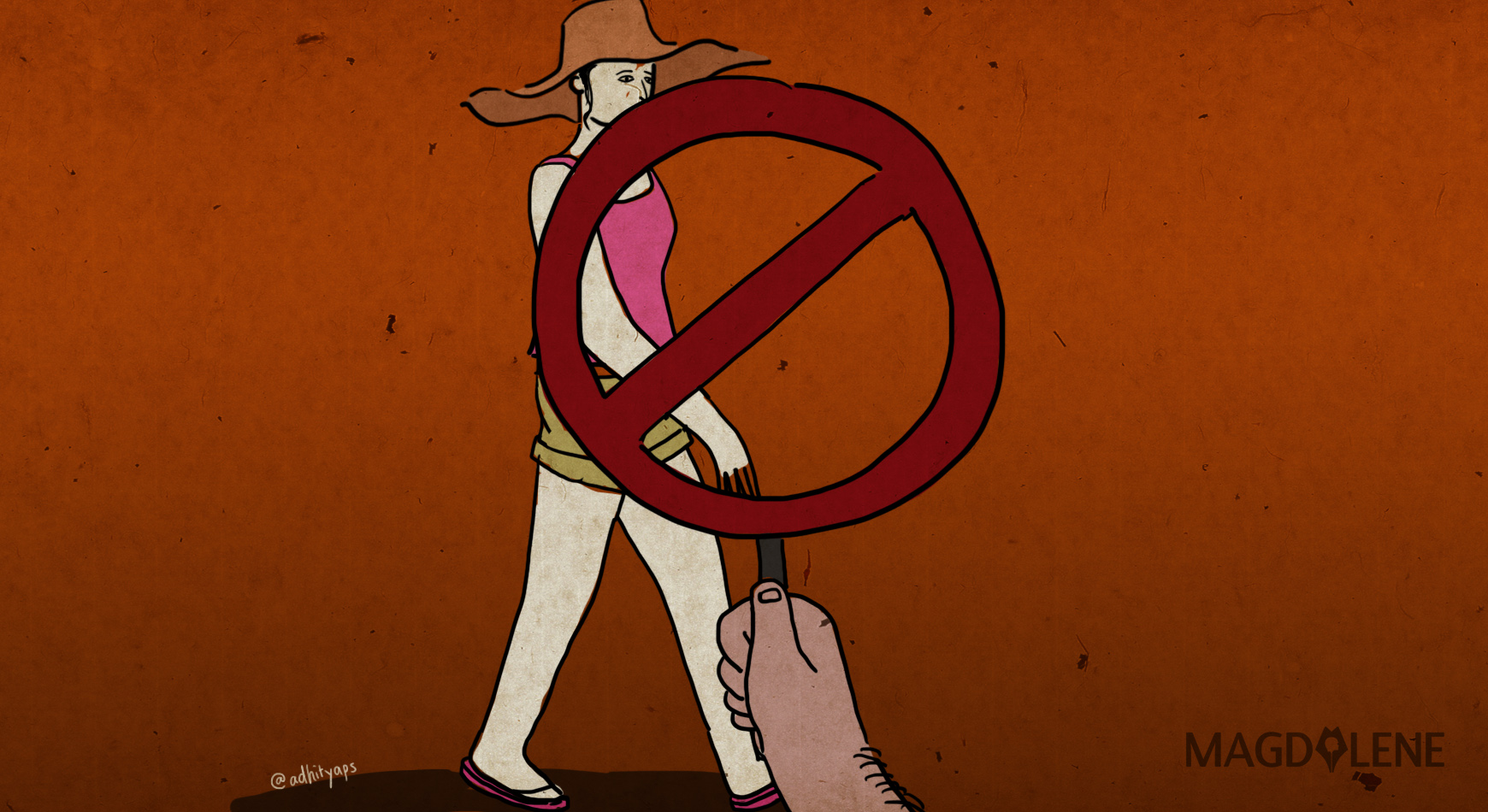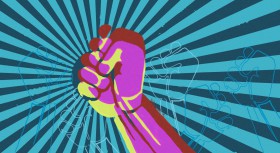“This yellow t-shirt is really good and I really like the pink-ish artwork, but there’s no way I’m going to wear it,” my friend told me.
“Why not?”
“Well, because it’s yellow and pink, of course. I don’t wear those colors.”
“Why don’t you?”
“Because… uh, it’s yellow and pink? I just don’t wear those colors.”
This conversation with my friend, a guy, occurred not too long ago. Since then I’ve been closely watching the men all around me, and I have realized that very few of them wear bright colors like yellow, purple or pink in public. They tend to stick with the “safer” or “neutral” colors such as white, black, and brown.
Personally, I think it is okay not to buy pink t-shirt if you don’t like pink. However, when you like a pink t-shirt, but decide not to buy it because you fear being judged by other people, I think that’s a problem.
And this problem reflects the bigger problem: the gendering of color. Some colors are labeled feminine and therefore they are made for women. Other colors, however, are not associated with masculinity. Rather, they are labeled neutral and, therefore, are safe to be worn by men as well as women. When it comes to colors, women are “given” more options than men.
Here’s the thing, though: COLORS HAVE NO GENDER.
Some people dislike the idea of feminism and are unsupportive of its movements because they misunderstand the whole concept as an attempt to place women in higher position than men, when what we strive for, is equality. Some people fail to see that the current status quo is not only harmful and disadvantaging to women, but to men as well.
Many times women are victims of gender discrimination or injustice, yet the blame is on us. Women are wrong for wearing hijab because it is a form of oppression. Women are also wrong for wearing short skirts, because that means they are “asking for it.” Women are wrong for putting on red lipstick, because it would make them look like prostitutes, yet women are also wrong for baring their face in public without makeup, because they look pale and unattractive. These real life examples happen on a daily basis that it is considered normal.
But gender bias is also harmful and disadvantaging for men as well. Boys are yelled at for crying, because it is a sign of weakness – and men should never be seen as weak. Boys are not allowed to play Barbie dolls or any dolls, because dolls are too “girly.” Baby boys can only wear blue, but baby girls can wear both blue and pink.
This bias has been internalized so deep within us that we see it as normal. You’re sad? Chin up, you’re a man! Black shirt and khaki trousers and white sneakers and a hint of red watch, a dark kind of red of course – I don’t want to be seen too colorful. I want to look cool. I’m a man.
It’s disadvantaging because men cannot be who they want to be, so they cannot be completely happy. Most of them are not wearing colors not because of their own dislike, but because the gender bias are so deeply entrenched in their consciousness. Men’s choices and options in life are limited simply because they were born with a biological reproduction organ named penis. The impact: a higher suicide rate among teen boys because they are “trained” to feel as if they don’t need to reach out for help when they have issues, because it’s not manly.
And it all began with color choice.
There’s no such thing as an ideal man or woman. There’s only an ideal you, and you yourself are the one who has the full control over it. Whether you are a woman or a man, an ideal you is a happy you, and that should be enough.
Vita Kartika is a Communication Science undergraduate student at Universitas Airlangga who believes in long life education and the power of process. She writes and contemplates about current issues on semanticsatiation.blogspot.com. Say hi, she’s @vitdgaf on each and every social media account.








Comments